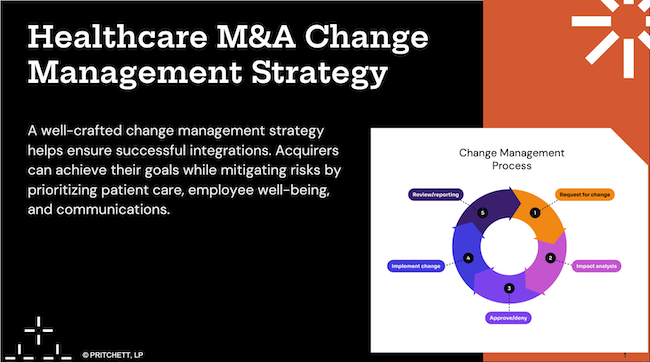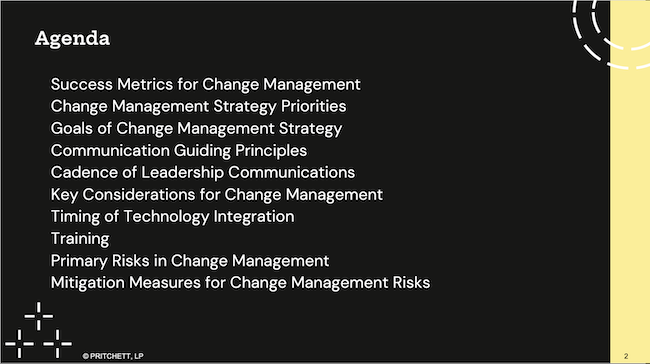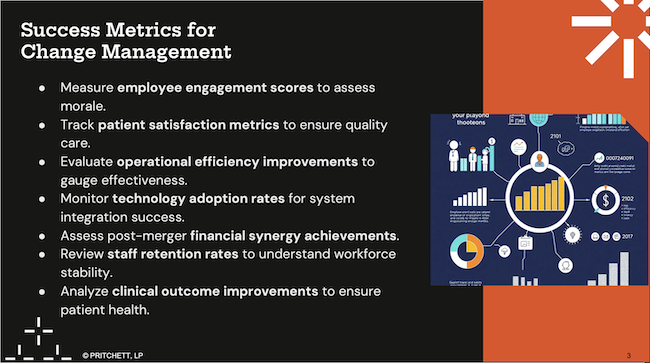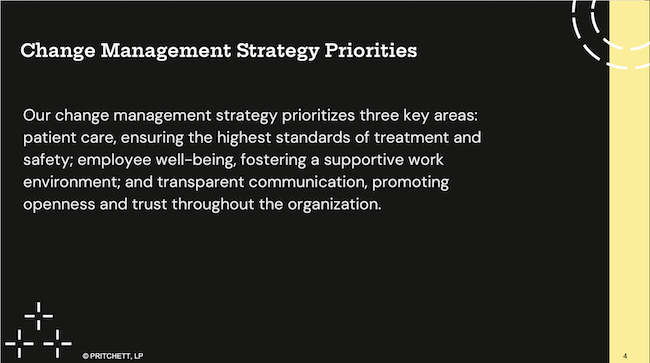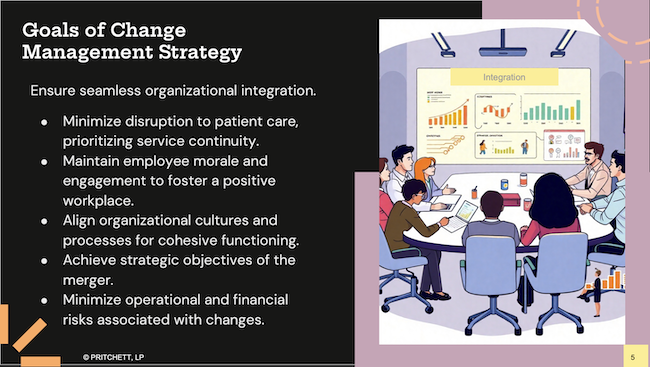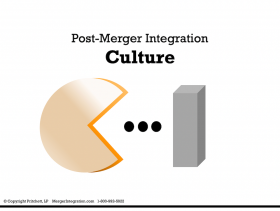A well-crafted change management strategy helps ensure successful integrations. Acquirers can achieve their goals while mitigating risks by prioritizing patient care, employee well-being, and communications.
Agenda
- Success Metrics for Change Management
- Change Management Strategy Priorities
- Goals of Change Management Strategy
- Communication Guiding Principles
- Cadence of Leadership Communications
- Key Considerations for Change Management
- Timing of Technology Integration
- Training
- Primary Risks in Change Management
- Mitigation Measures for Change Management Risks
Success Metrics for Change Management
- Measure employee engagement scores to assess morale.
- Track patient satisfaction metrics to ensure quality care.
- Evaluate operational efficiency improvements to gauge effectiveness.
- Monitor technology adoption rates for system integration success.
- Assess post-merger financial synergy achievements.
- Review staff retention rates to understand workforce stability.
- Analyze clinical outcome improvements to ensure patient health.
Change Management Strategy Priorities
Our change management strategy prioritizes three key areas: patient care, ensuring the highest standards of treatment and safety; employee well-being, fostering a supportive work environment; and transparent communication, promoting openness and trust throughout the organization.

